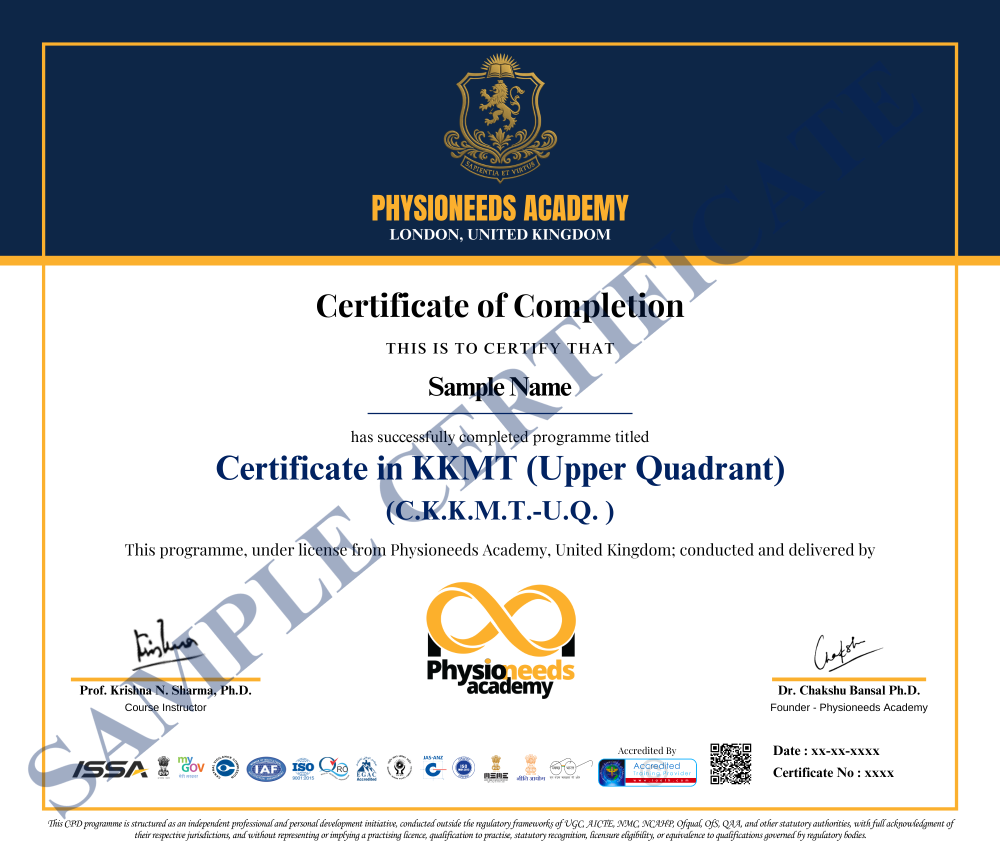There are no items in your cart
Add More
Add More
| Item Details | Price | ||
|---|---|---|---|
Ready to Become a Certified KKMT-3D Manual Therapist (Upper Extremity Joint Mobilization)
Online Life Transforming Course which will enhance your practice 360 degree
Healthcare professionals from these institutes chose us to keep themself updated.
About the Program
Experience Advanced Techniques to Restore Mobility & Function
KKMT’s 3D Upper Extremity Module equips practitioners with precision-driven manual therapy techniques for the shoulder, elbow, wrist, and hand complexes. Rooted in anatomical biomechanics and therapeutic tradition, this course helps improve circulation, alleviate pain, and restore functional movement—vital for achieving optimal upper limb rehabilitation outcome
Through online sessions, participants will learn about technical aspects,and having lifetime access to the material so he/she can revist and revise the concepts.
Master the KKMT-3D Manual Therapy – Heal, Relieve & Transform Lives!
The Certification in KKMT-3D Manual Therapy is an advanced, integrative program crafted for physiotherapists seeking to deepen their expertise in manual therapy.
Gain skills in evidence-based KKMT techniques to support pain relief, recovery, and improved mobility—all rooted in KKMT’s advanced 3D manual therapy framework.
Program Details
Discover the ancient healing power of KKMT & take your therapy skills to the next level!
What's Special?
Live & Recorded Sessions: Integrative learning with real-world applications
Benefits
This course is one-of-a-kind, designed to help professionals excel in musculoskeletal physiotherapy & rehabilitation with advanced clinical training.
Prof. Krishna N. Sharma
Prof. Krishna N. Sharma, the world’s youngest Vice-Chancellor (2017), is a 9-time world record holder, educator, and author of over 400 books, including 40+ bestsellers. Currently Vice-Chancellor at St. Louis University, Cameroon, he previously held the same role at Victoria University, Uganda, and has taught across Africa, Asia, and Europe.
He developed the first school of thought in Manual Therapy (KKMT), now integrated into national physiotherapy curriculums and researched globally. Prof. Sharma is the first Indian physiotherapist to serve as a Vice-Chancellor and appear on the cover of PhysioTimes. A 2-time TEDx speaker, his courses have enrolled over 3,50,000+ students from 193+ countries.
We are here to assist you with any queries.
Feel free to contact us via WhatsApp at +91-8800220066, +91-9990100373 during office hours (9 AM to 6 PM IST, weekdays).
We are happy to help!


